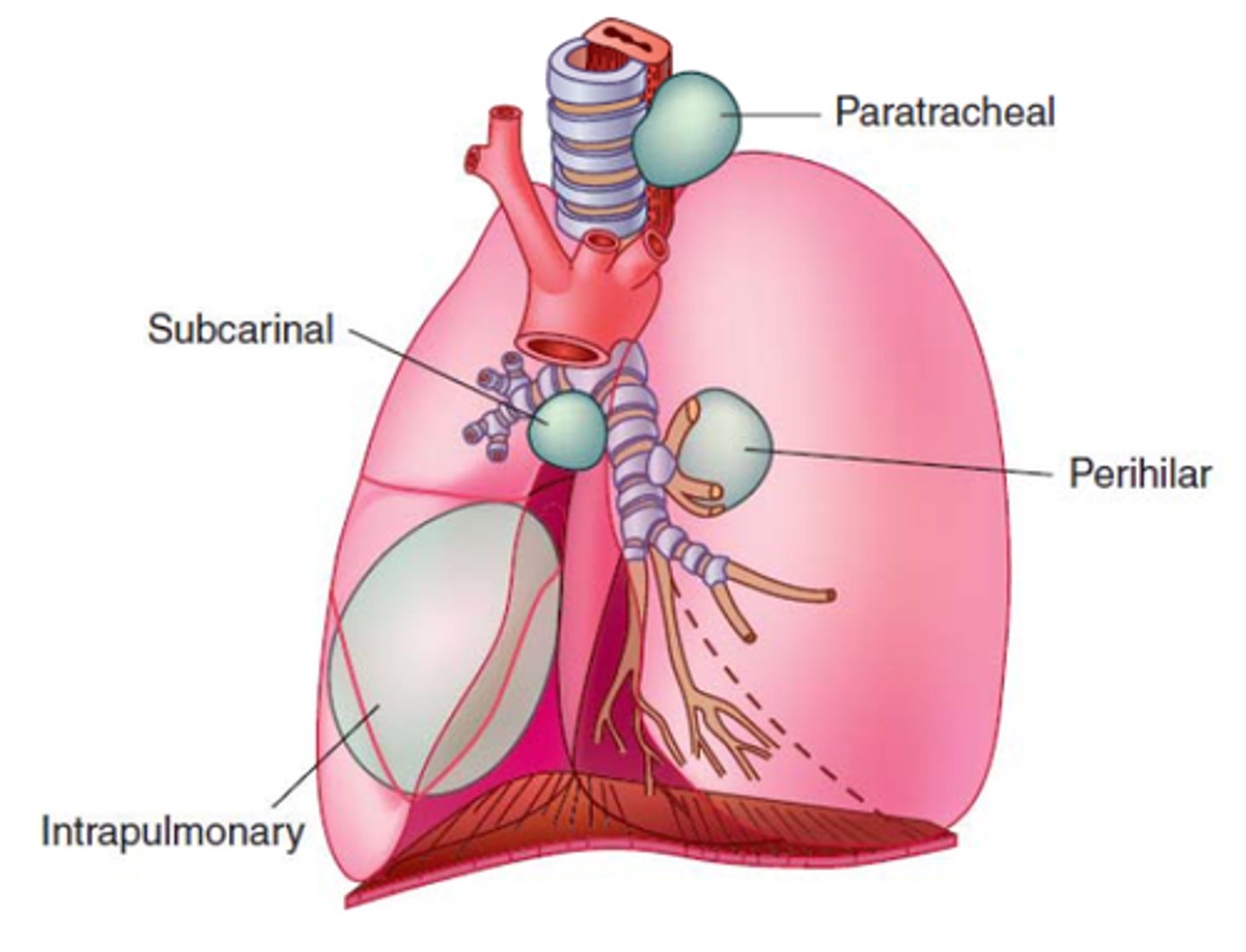77. Congenital anomalies of the lungs, atelectasis, acute lung injury
1/16
There's no tags or description
Looks like no tags are added yet.
Name | Mastery | Learn | Test | Matching | Spaced |
|---|
No study sessions yet.
17 Terms
Bronchogenic cyst?
Abnormal budding of the lung primordium.
- Located in anterior mediastinum, contains respiratory epithelium & cartilage

Congenital lobar emphysema?
Hyperinflation of one or multiple lobes.
- Surgical removal of the affected region cures the disease
Pulmonary sequestration?
Piece of lung is not connected to the airways.
1. Extralobar type: has its own pleural surface & blood supply
2. Intralobar type: occurs inside another, healthy lobe.
= Both are associated with mucus accumulation & pneumonia
Congenital pulmonary airway malformation?
When the lung parenchyma of an entire lobe is replaced with abnormal lung tissue.
- May lead to carcinoma
Pulmonary hypoplasia?
Number & size of alveoli is decreased.
Can be caused by:
- Abdominal herniation into the thorax, not allowing lung to grow
- Lack of respiratory movement
- Loss of lung liquid
Pulmonary agnesis?
When one lobe, one lung or both lungs are absent.
Atelectasis?
Term to describe inadequate expansion of air spaces in the lung.
3 types exists:
1. Resorption atelectasis
2. Compression atelectasis
3. Contraction atelectasis
Resorption atelectasis?
Obstruction in the airways which prevents air from reaching the distal airways.
- Lung can collapse
Compression atelectasis?
When fluid or air inside the pleural space compresses the lung
Contraction atelectasis?
When fibrotic tissue in the lung/pleura hampers the expansion & decrease compliance of lung.
- Restricts the lung
Acute lung injury?
A spectrum of bilateral lung damage, which can occur in many conditions:
- Pneumonia
- Aspiration of gastric content
- Sepsis
- Circulatory shock
Symptoms of acute lung injury?
- Dyspnoea
- Hypoxaemia
- Bilateral pulmonary edema
Can progress into acute respiratory distress syndrome (ARDS)
Acute respiratory distress syndrome (ARDS)?
There is alveolar capillary & epithelial damage.
- Life-threatening respiratory failure occurs, with resulting cyanosis & hypoxemia.
Histological manifestation of ARDS?
Diffuse alveolar damage (DAD)
- Vascular permeability increases, allowing exudate to enter the alveoli & prevent gas exchange
- Alveolar macrophages recruits neutrophils, causing further damage to endothelium.
Repair process of ARDS?
exudative phase: fibrin rich exudate and remnants of necrotic epithelial cells organize and form hyaline membranes which cover gas exchange membrane and blocks it
regenerative phase: occurs 1-2 weeks later, type 2 pneumocytes prolif and differentiate into type 1 to rebuild epithelium
repair phase: new CT formation will cause distortion of lung architecture and shrinkage of the lungs. A new BM is formed, which incorporates the CT into the interstitium
Neonatal respiratory distress syndrome (NRDS)?
Occurs in premature new-borns.
- Not enough production of surfactant
= Lungs collapse
Bronchopulmonary dysplasia?
Infants staying too long on respiratory support with NRDS.
- Can cause injury to the alveolar septa, decreasing the number of alveoli.